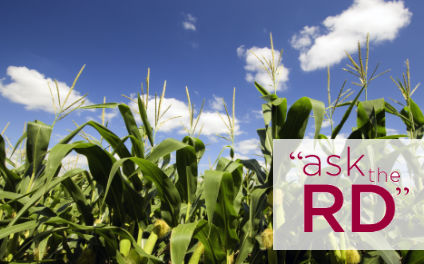GMOs*, or Genetically Modified Organisms, seem to be making headlines almost every day. First, a GMO refers to plants or animals whose genetic material (DNA) has been altered using advanced scientific techniques. In other words, characteristics from one plant or animal are added to another. A genetically modified organism may be resistant to predatory insects or better tolerate pesticides. These characteristics can reduce costs for farmers, making GMOs potentially popular among food producers. Here in the US, a majority of corn, soy, canola, cottonseed and sugar beet crops are produced using GMOs; however, products that are 100% organic are prohibited from having GMOs.
As you may be hearing, foods containing GMO ingredients are prevalent in the US but are not labeled as such. Over the years, controversy over GMO foods and their labeling has grown, which may be the reason for your question. Those in favor of using GMOs in the food supply argue that there are no basic structural differences between foods produced from GM plants and those from non-GM crops. However, those against the use of GM crops in the US food supply argue that there are too few studies funded by independent groups that examine the health effects of GM foods. Additionally, those in favor of the labeling of foods containing GMOs argue that consumers have a right to know how foods they consume are produced. Click here for more pros and cons regarding the GMO debate.
Since there currently are no labeling regulations for GMO foods, it’s impossible for Healthy Dining to provide such information on our website.
HealthyDiningFinder.com focuses on quality ingredients like lean protein, fruits and vegetables and whole grains shown to be essential to a healthy diet and lifestyle.
*update: GMOs may now be referred to as “bioengineered foods”.

